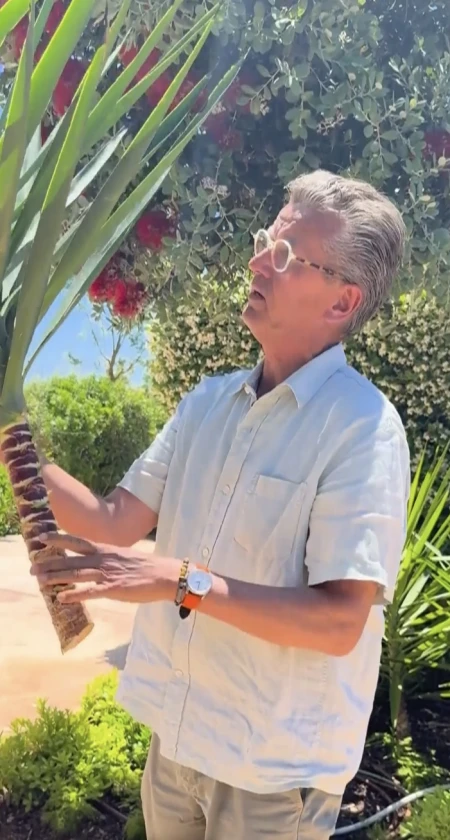
Yuccas belong to those plants that can handle almost anything – drought, heat, poor soil. And they reward you with this incredible presence. I like to use them in reduced gardens, where they can work with clear structure and almost archaic power.
I work particularly often with Yucca elephantipes – a robust, low-maintenance species that originally comes from Central America. In nature, it grows tree-like with multiple trunks, can reach up to nine meters tall outdoors, and sometimes even forms large, white, bell-shaped flower clusters in old age. Its sword-shaped but comparatively soft leaves make it much more approachable than, say, Yucca aloifolia, which comes with much sharper leaf tips. In pots or containers, it remains more compact – indoors at about three meters.
What many people don't know: You can propagate this impressive plant quite easily yourself. You only need a sharp pruning saw or Japanese saw, a bit of courage, and time.
In a patio in Mallorca, I recently cut back several large yuccas severely – not only for propagation, but also to encourage the plants to develop multi-stemmed growth. I cut the plant about ten centimeters above the ground. A clean cut – that's it. What looks like vandalism at first is actually the beginning of something new.
The cut-off part – the upper half – becomes the new plant. And what remains in the ground sprouts again on its own – often even with several new heads. At first, this looks like "heaven help us," but after just a few weeks, the first shoots appear directly from the old stem.
I remove most of the leaves from the upper part. They usually come off easily – the less leaf mass, the better: The plant loses less water through transpiration and can focus entirely on forming new roots. Then the stem simply goes into good, well-draining soil. Stick it vertically into the soil, water it, leave it alone.
Yucca elephantipes prefers a bright, sunny to partially shaded location. The soil should be slightly sandy and well-draining – waterlogging must be avoided at all costs. I like to use a mixture of potting soil, sand, and some pumice.
This way, one yucca becomes two – sometimes even more: One grows anew from below, often with multiple shoots, the other begins to root anew from above. And all without stress. When it's warm, it only takes a few weeks for the first roots to appear. By next year at the latest, the cutting has become a strong new plant.
I like to do this in late spring or summer, when there's enough light and warmth. Indoors, propagation works all year round – as long as temperatures stay consistently above 15 degrees. Outdoors, Yucca elephantipes is not winter-hardy. It needs at least 5–10 °C in winter and should be kept frost-free – making it an ideal container plant for Mediterranean gardens, courtyards, or conservatories.
This method works, by the way, with almost all yucca species – from the sharp-edged Yucca aloifolia to the cultivated Yucca 'Elegance' with its softer leaves and more elegant growth.
You just have to dare.